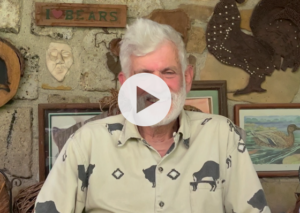Hoosier National Forest Campaign

Attracting more than 300,000 visits each year, the Hoosier National Forest comprises the largest public forest in Indiana and contains some of the most scenic and precious wilderness in the state.
What Will Happen If We Do Not Protect Hoosier National Forest?
Threats
- Logging, Burning, and Road Building
A plan by the U.S. Forest Service will log, burn and build roads through 21 square miles of the Houston South area that adjoin the Charles Deam Wilderness. - Mid-States Corridor Highway
Two proposed highway routes for the Mid-States Corridor Project will bulldoze through precious forestland, fill in hollows and destroy some of the state’s most placid and unique wilderness.
Impacts
- Threaten water quality
Runoff from the cutting and burning would pollute Lake Monroe, the drinking water source for more than 140,000 Hoosiers. - Endanger wildlife
Seven species of endangered or threatened bats live in the project areas. Other animals likely to be burned up or adversely affected by the logging include the state endangered Timber Rattlesnake and several state-endangered or rare warblers. - Exacerbate climate change
For every acre of forest destroyed, six less tons of carbon are sequestered each year. - Imperil natural wonders
The Houston South project will destroy one fourth of the largest wild forest in the lower Midwest. The highway will disturb the state’s most expansive cave system and the underground Lost River, causing unknown changes to the area’s complicated drainage, fed by as many as 1,000 sinkholes per mile. - Jeopardize outdoor recreation
The Houston South project would consume a significant part of the Hoosier’s most popular horseback area and force closures or reroutes of the Knobstone Trail, the state’s longest and most famous backpacking trail.
What We Love About Hoosier National Forest
- Some 204,000 acres of towering trees, rolling and rocky hills and knobs, cliffs, waterfalls, forest streams, and back-country trails extend across nine counties in south-central Indiana.
- Motorized vehicles are prohibited in the Charles C. Deam Wilderness Area. Mules and horses must be used to maintain hiking trails.
- Large portions of the more than 260 miles of hiking trails are available for horseback riding and mountain biking.
- The unique karst landscape is home to more than 165 caves and numerous sinkholes, springs, and underground rivers.
- Nine different lakes and hundreds of ponds offer fishing for largemouth bass, bluegill, catfish, redear sunfish, and more.
- Developed campgrounds, primitive camping, and cabin rentals overlook Lakes Monroe and Patoka.
Learn more about the history of the hoosier national forest in this video interview
What You Can Do to Protect Hoosier National Forest
Join the Indiana Forest Alliance, the organization that fights for Indiana’s forests.

